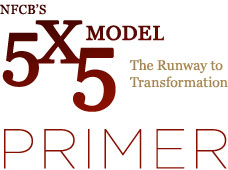 For reasons that remain a mystery to me (and I’m sure others), the Board of Directors of the National Federation of Community Broadcasters has dismissed NFCB President, Maxie Jackson. An article in Current quotes a very unhappy Vice President Ginny Berson confiding that she’d been told “style issues” and differences in vision prompted the ouster.
For reasons that remain a mystery to me (and I’m sure others), the Board of Directors of the National Federation of Community Broadcasters has dismissed NFCB President, Maxie Jackson. An article in Current quotes a very unhappy Vice President Ginny Berson confiding that she’d been told “style issues” and differences in vision prompted the ouster.
But “that’s incredible to me,” Berson added, “because I’ve never heard the board articulate a vision.” The move also surprised the general manager of one of my favorite public radio stations, Matt Martin of KALW in San Francisco.
“Style issues?” Martin asked in his comment to the Current piece. “What a step backward for the NFCB, and for its member stations. Maxie & Ginny were a great team, and articulated a vision of growth and development for community radio that was desperately needed.”
That “vision of growth and development” to which Martin refers is the NFCB’s “5×5” development plan. The news of Jackson’s ouster prompted me to read the document. Turns out it’s really quite good. If you are one of the many people who are working on a Low Power FM application, here are three aphorisms from the plan well worth remembering if you get a signal.
1. Your board “does not make decisions about particular programs or the program schedule.”
My experience is that community radio station boards that ignore this principle become useless—or worse: launching pads for air time seekers and the site of endless feuds. They lose their role as effective fund raising and long term planning venues. The only time boards should be involved in programming is when the station airs something that could get the license in trouble with the FCC or invites a lawsuit, and management refuses to deal with the problem.
2. “You have access to and make use of census data for communities in your footprint.”
So many community radio planning discussions dwell on abstractions. “We need to reach out to x or y community,” you hear folks say. But how many people are actually in these communities? How old are they? What are their income levels? Are there actually a significant number of people fitting that description in your signal area? Go to the United States Census “quick facts” database and find out.
3. “While public access is a valuable objective, you value service to the community over that of individual programmers.”
Amen. Jackson did a Q&A about the 5×5 and was asked about this assertion. “Q. What about situations where providing access IS a public service?” came one query. His reply was perfect:
“A. If a teacher is given a class room with no students – is that ‘public service’ via access? I think not. In short, access alone does not guarantee audience or use which directly effects ‘impact’ and ‘sustainability’.”
Example: I have a Sam Vibe radio station that streams eight classical piano pieces in a loop. I put it together just for fun and to learn some stuff about online databases. At any given moment it has around two listeners, at most. Is that “access”? Of course not. If hardly anyone is listening, to what do I have access? A technology platform without people is very poor access, at best.
Bottom line: fill your community radio signal board with individuals who actually support the station. Let them hire a manager, then get out of the way so she can do her job: creating a schedule of programs to which the community will actually listen. More wise 5×5 words here.


